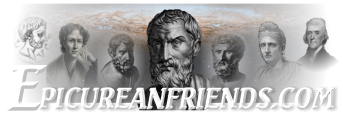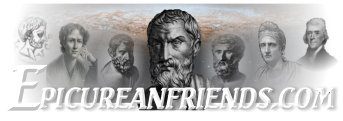[EDIT BY CASSIUS: Here is a link to theDeLacey Translation including the DeLacy Appendix which gives a lot of background on the epistemology issues.]
(Note: these are my personal notes. Not all of these notes are from the book; some are from Google to help me further understand the basic ideas, and some are my"notes to self".)
Signs: what you see or what you think about
"All instruction is either about things or about signs; but things are learnt by means of signs. I now use the word “thing” in a strict sense, to signify that which is never employed as a sign of anything else: for example, wood, stone, cattle, and other things of that kind. Not, however, the wood which we read Moses cast into the bitter waters to make them sweet, nor the stone which Jacob used as a pillow, nor the ram which Abraham offered up instead of his son; for these, though they are things, are also signs of other things. There are signs of another kind, those which are never employed except as signs: for example, words. No one uses words except as signs of something else; and hence may be understood what I call signs: those things, to wit, which are used to indicate something else. Accordingly, every sign is also a thing; for what is not a thing is nothing at all. Every thing, however, is not also a sign. And so, in regard to this distinction between things and signs, I shall, when I speak of things, speak in such a way that even if some of them may be used as signs also, that will not interfere with the division of the subject according to which I am to discuss things first and signs afterwards. But we must carefully remember that what we have now to consider about things is what they are in themselves, not what other things they are signs of. AUGUSTINE, De Doctrina 1.2." From the Heidlblog
Chapter 2, Introduction to Philodemus On Methods of Inference
Per the Stoics:
- Common sign: exists whether the unperceived object that it signifies exists or not. Therefore not a reliable basis of inference.
- Particular sign: exists only when the unperceived object that it signifies exists. If the existence of the object signified is denied, then the existence of the sign must be denied as well. These provide the only reliable grounds for inference and are established through the purely formal test of contraposition.
- Contraposition: inference from a logically equivalent contrapositive.
- Contrapositive: "if not-B then not-A" is the contrapositive of "if A then B."
Per the Epicureans:
- The relation between sign and thing signified is learned only through perception, through the method of induction or analogy. We infer the nature of unperceived objects by analogy with the objects in our own experience.
- Inductive reasoning makes broad generalizations from specific observations; aims at developing a theory.
- Deductive reasoning works from general to specific; aims at testing a theory.
- If a constant connection between objects is not first established by perception, contraposition is impossible.
- Epicureans use inductive reasoning, and agree that common signs are not a valid basis of inference.
- Inconceivability, not logical necessity, is a criterion of a particular sign and is based on past experience. An inference from signs is valid if it is inconceivable that the sign exists when the thing signified does not. (page14) (Hmmm. What are some examples of this? )
- The four empirical criteria of truth: perception, anticipation, mental perception and feeling. Mental perception is defended and used in reference to knowledge of the gods.

